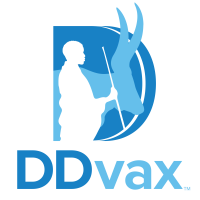Next-Generation Vaccines for Rift Valley Fever
There is currently no vaccine approved to protect humans against Rift Valley fever.

To meet this need, the Coalition for Epidemic Preparedness Innovations (CEPI) has selected the UC Davis One Health Institute as part of a multi-institutional multi-year collaborative effort including the Colorado State University, the US Centers for Disease Control and Prevention (CDC), and the Ifakara Health Institute (Tanzania) to evaluate the suitability of “DDvax” a live-attenuated rationally designed candidate vaccine for Rift Valley fever virus for use as a human vaccine. This candidate vaccine was developed initially at the U.S. CDC and contains deletions of the known virulence factors rendering the vaccine highly attenuated and unable to be transmitted by mosquitoes.
Over the past 15 years, this candidate has proven itself safe and effective in preventing RVF infection and disease in a variety of animal models ranging from rodents to livestock to non-human primates. Now with support from CEPI, our consortium is working to complete final pre-clinical safety and immunogenicity evaluations of DDvax in preparation for eventual human safety and immunogenicity trials in endemic areas across Africa.

